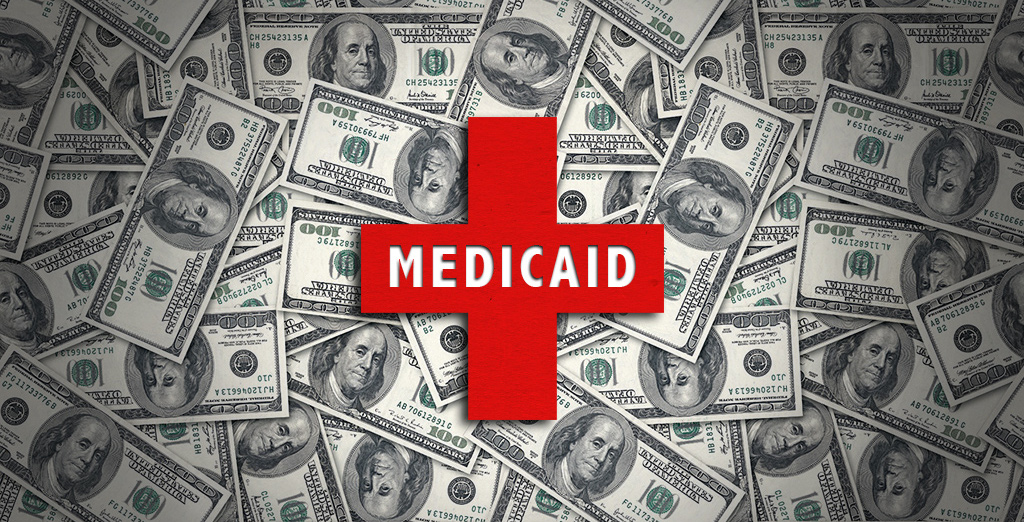Last month Congress passed another temporary stopgap measure to keep the federal government operating for a few more months. This has become a predictable ritual in Washington, reflecting our leaders’ inability to enact changes that would address our gaping budget deficits and growing debt. Nowhere is this truer than in Medicaid, a vital yet increasingly unsustainable program that pays health and long-term care expenses for more than 75 million low-income Americans.
Reform is possible, if only Washington can muster the political will to act.
Medicaid currently costs the federal government $800 billion annually, and according to official projections, its expenses are expected to surpass $1 trillion by 2028—a rate of growth that far outstrips the overall economy or family incomes.
These figures alone highlight the need for reform, but inefficiencies within the program further exacerbate its fiscal burden. For example, Medicaid’s true error rates hover between 15% and 25%, likely costing taxpayers at least $100 billion each year. Fraud and mismanagement are rampant, ranging from Medicaid managed care companies providing coverage for deceased individuals to broken computer systems that fail to track enrollment and eligibility properly.
Deeper structural flaws have long been ignored—or even exacerbated—by Congress. Medicaid’s funding structure leads to massive disparities in how the program serves different states. When lawmakers designed Medicaid’s financing formula almost 60 years ago, their goal was to ensure that poorer states received more federal Medicaid funding as a proportion of their costs than wealthier states. But the formula they implemented has a significant flaw: the federal government covers at least half of Medicaid costs in every state, regardless of the state’s wealth.
Today, wealthier states often receive far more Medicaid dollars per person in poverty than poorer states. In 2019, for example, Georgia received about $5,000 in federal Medicaid funding for every resident in poverty, while Alaska and the District of Columbia received more than four times that amount. These disparities aren’t tied to any sensible measure of need. In fact, states with sicker, lower-income populations and less access to health care often receive less federal aid, while more prosperous states receive more.
The expansion of Medicaid under the Affordable Care Act has poured fuel on the fire, making these inequities worse. While the federal government pays about 65 percent of states’ Medicaid costs for children, pregnant women, seniors, and people with disabilities, it covers 90 percent of the medical expenses of able-bodied, working-age adults enrolled under Medicaid expansion. Predictably, research suggests that health care resources are being diverted away from traditional enrollees and to expansion enrollees in expansion states.
At the same time, while the uneven adoption of Medicaid expansion across states plays a role in these disparities, it’s not the core issue. The overall pattern looks similar even when excluding expansion-related spending.
Recently, two of our colleagues at the Paragon Health Institute, Brian Blase and Drew Gonshorowski, laid out a two-pronged plan to make federal Medicaid funding more fair and financially sustainable. First, they end the 90 percent federal reimbursement for expansion enrollees. About half of expansion enrollees would be shifted to the exchanges with subsidies for coverage. States would be free to continue covering the remainder of their able-bodied, working-age residents who have income below the poverty line if they choose, but they would receive the same federal reimbursement as other enrollees. The federal government should not pay a higher percentage of the expenses for expansion enrollees than it does for children, pregnant women, seniors, and people with disabilities on the program.
The second reform would reduce the floor on federal Medicaid funding from 50 percent of a state’s expenses to 40 percent. That change would only affect the 10 wealthiest states (and the District of Columbia), including California, New York, Massachusetts, and Connecticut. These states could choose to maintain their existing Medicaid programs, eligibility rules, and benefits packages; they would just need to pick up a bit more of the cost.
Not only would these changes save the federal government money and help to shrink the deficit, Paragon’s proposals would ensure that states with greater needs receive a greater share of federal support—just as Congress originally intended.
These ideas have drawn criticism from progressive groups like the Center for Budget and Policy Priorities (CBPP), which accused Blase and Gonshorowski of trying to slash benefits and tighten eligibility. But these criticisms ignore the real issues plaguing the program: the misallocation of resources that often leaves the most vulnerable populations underserved. These aren’t merely opinions; they are verifiable facts, backed by public data.
If our progressive friends have a better idea for reining in Medicaid’s exploding costs while protecting care for vulnerable populations, we’d love to hear it.
‘Should the U.S. Reform Medicaid?’ by Gary D. Alexander, EdD, originally published on ‘Real Clear Health’ on October 23rd, 2024. The original article can be found here: https://www.realclearhealth.com/articles/2024/10/23/should_the_us_reform_medicaid_1067174.html.
